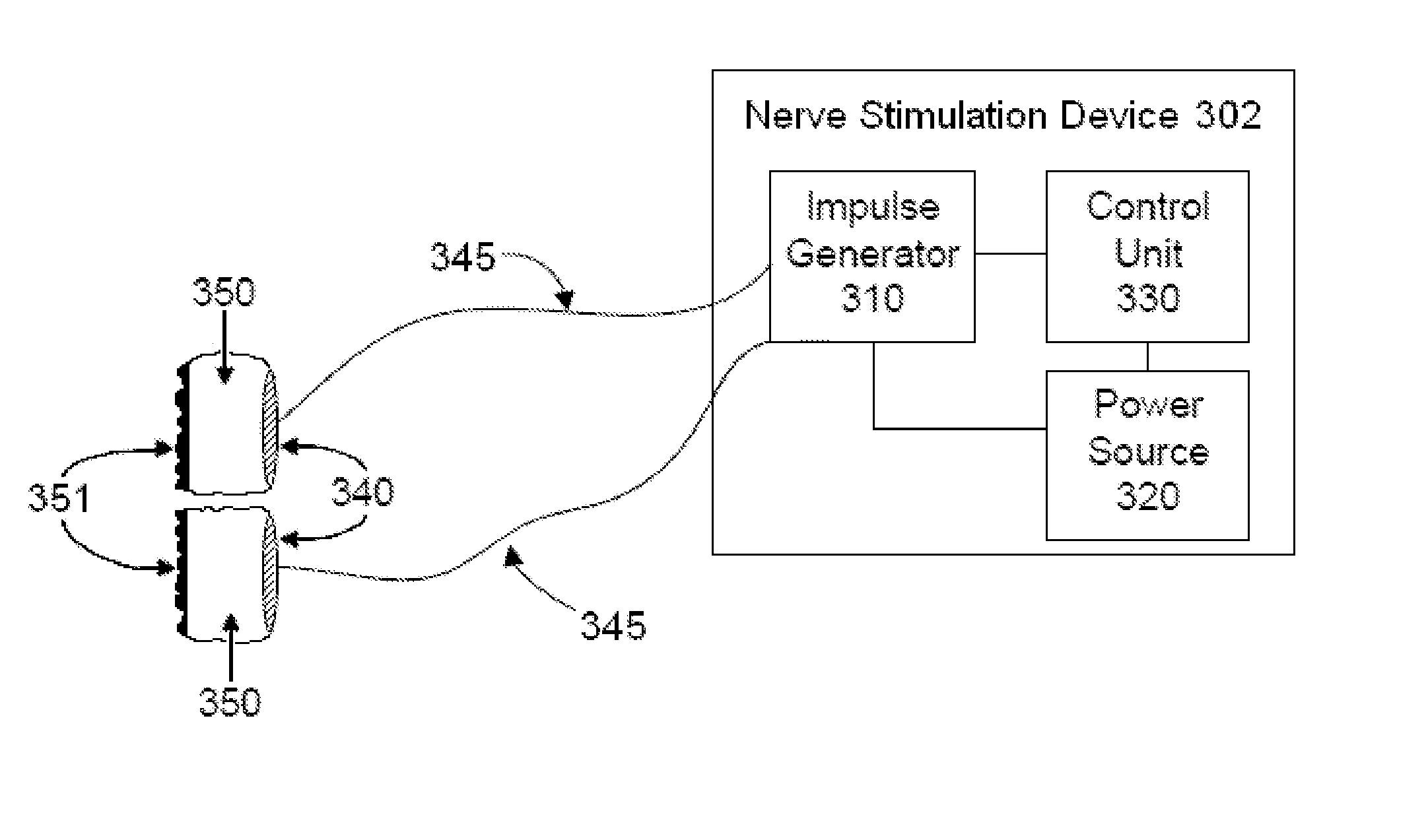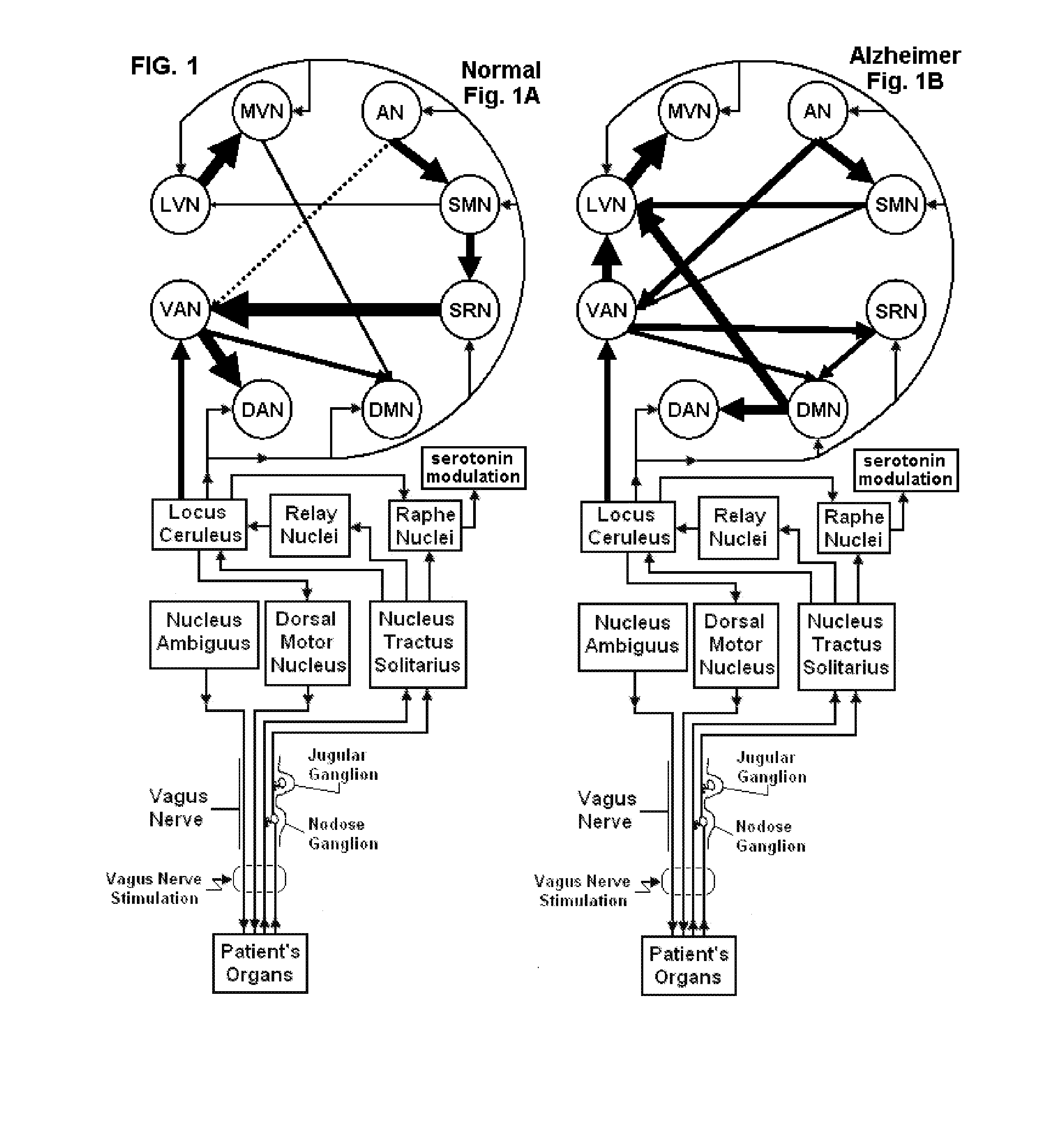Non-invasive magnetic or electrical nerve stimulation to treat or prevent dementia
a magnetic or electrical nerve and dementia technology, applied in the field of non-invasive magnetic or electrical nerve stimulation to treat or prevent dementia, can solve the problems of perikaryal loss of those locus ceruleus cells, damage to the locus ceruleus terminal field and the norepinephrine, damage to or loss of other nearby nerve cells,
- Summary
- Abstract
- Description
- Claims
- Application Information
AI Technical Summary
Benefits of technology
Problems solved by technology
Method used
Image
Examples
Embodiment Construction
[0068]In one embodiment, a time-varying magnetic field, originating and confined to the outside of a patient, generates an electromagnetic field and / or induces eddy currents within tissue of the patient. In another embodiment, electrodes applied to the skin of the patient generate currents within the tissue of the patient. An objective of the invention is to produce and apply electrical impulses that interact with the signals of one or more nerves to achieve the therapeutic result of altering the course of dementia, particularly Alzheimer's disease. Much of the disclosure will be directed specifically to treatment of a patient by electromagnetic stimulation in or around a vagus nerve, with devices positioned non-invasively on or near a patient's neck. In particular, the present invention can be used to indirectly stimulate or otherwise modulate nerves that innervate the locus ceruleus. However, it will be appreciated that the devices and methods of the present invention can be appli...
PUM
 Login to View More
Login to View More Abstract
Description
Claims
Application Information
 Login to View More
Login to View More - R&D
- Intellectual Property
- Life Sciences
- Materials
- Tech Scout
- Unparalleled Data Quality
- Higher Quality Content
- 60% Fewer Hallucinations
Browse by: Latest US Patents, China's latest patents, Technical Efficacy Thesaurus, Application Domain, Technology Topic, Popular Technical Reports.
© 2025 PatSnap. All rights reserved.Legal|Privacy policy|Modern Slavery Act Transparency Statement|Sitemap|About US| Contact US: help@patsnap.com



